Porsche’s brilliant Boxster continues to shine as it enters its twilight years
Four generations of Porsche Boxster have redefined the open-topped sports car. As electrification looms, we check out what could be the last – and best – of the current line
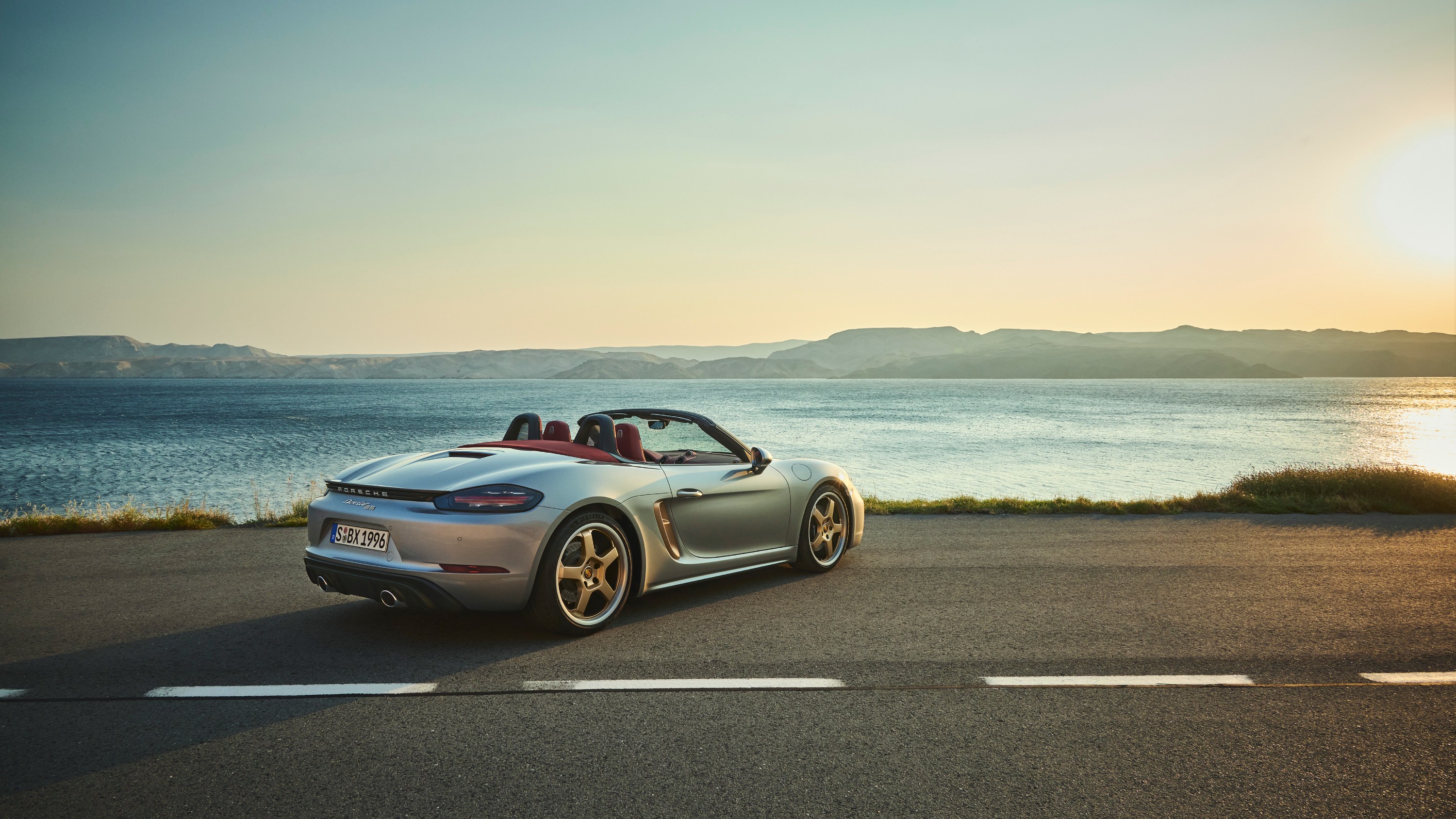
The Porsche Boxster is something of an automotive evergreen, the Platonic ideal of a compact two-seater open sports car that simultaneously harks back to the company’s origins while also remaining its purest statement of sporting intent.
These days, the Boxster is known as the 718, a simple designation along the lines of its older sibling, the 911. 2023 marks the 911’s 60th birthday; the 718 Boxster is a far more recent arrival. Although the 911 remains Porsche’s defining model, this most iconic of sports cars gets more sophisticated and complex with each passing generation. The Boxster was a way of getting back to basics.
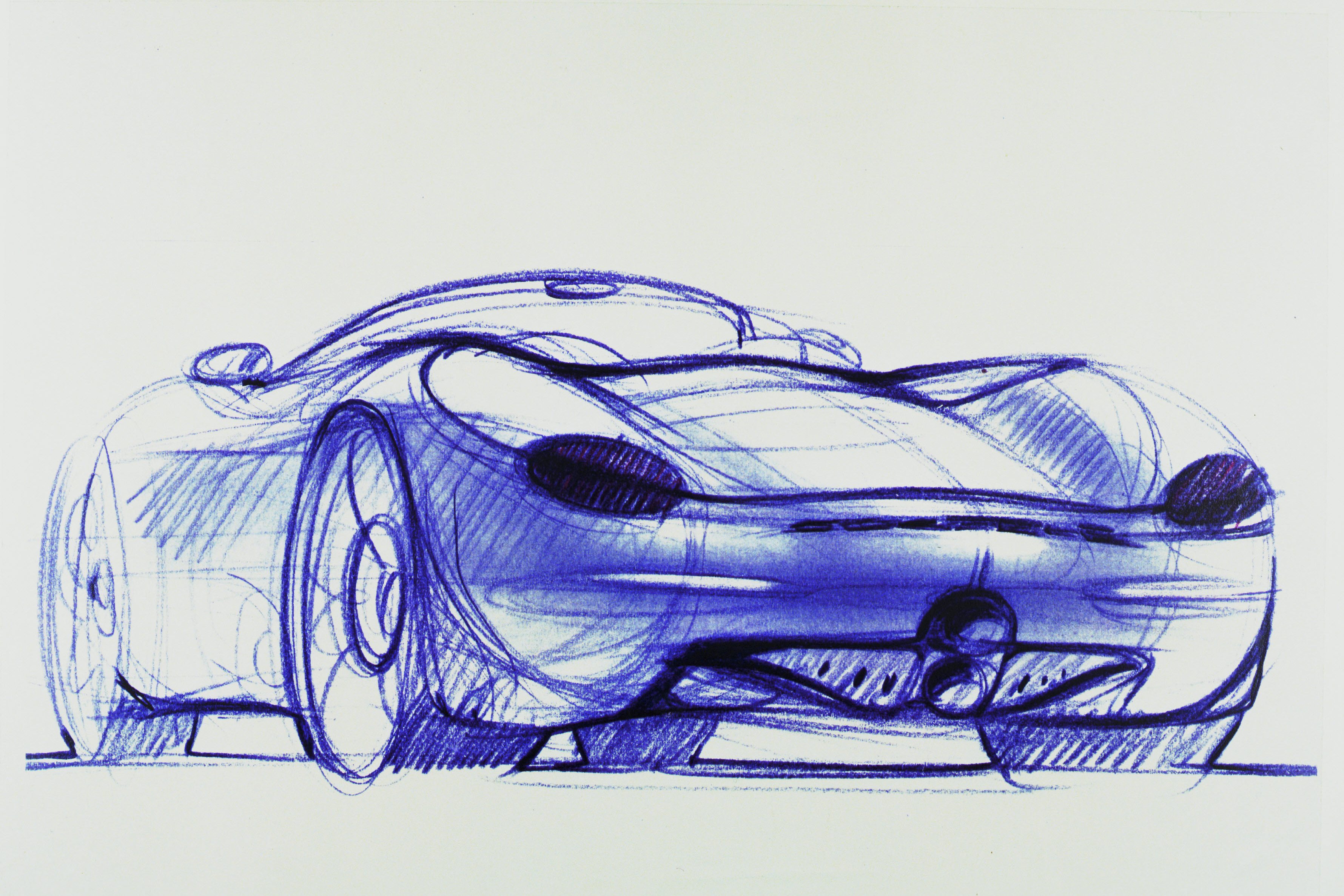
Porsche Boxster concept sketch, 1992
The first hint of the new model came in early 1993, with the reveal of the Boxster concept at the Detroit Motor Show. With a new name that combined Porsche’s four-cylinder ‘Boxer’ engine with ‘Roadster’, the elegant silver-painted concept car was the first public manifestation of two years’ worth of design work.
This was the height of the retro-future era of car design, but while the Boxster certainly harked back to some Porsche classics – notably the 1950s-era 550 Spyder and 718 RS 60, not to mention the original 356 Speedster – it was exceptionally pure in its form and detailing. A rapturous reception from the auto press and potential buyers convinced the company that any production model would have to bear a striking similarity to the concept, or risk disappointment.
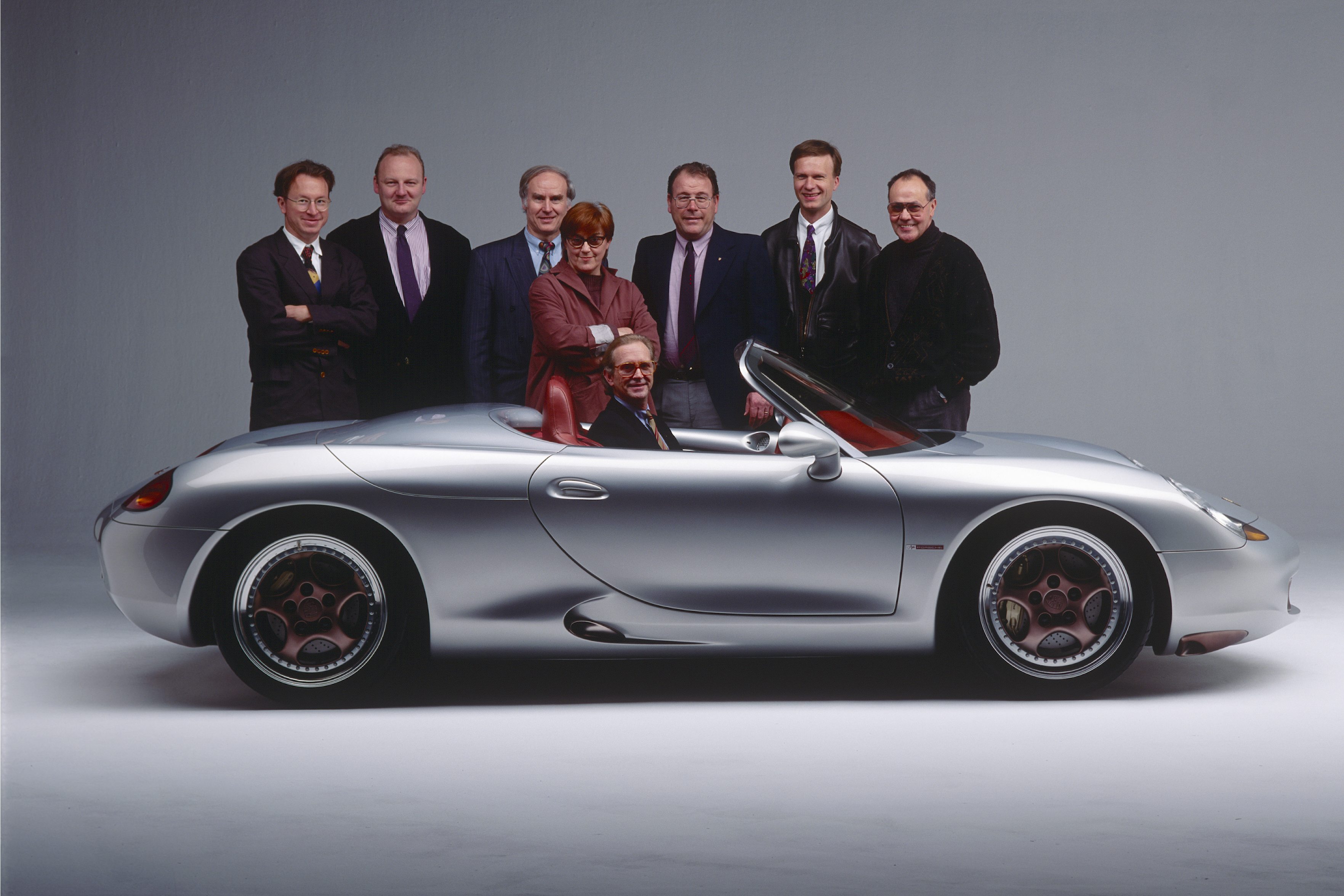
Porsche Boxster concept, 1993, with Harm Lagaay, head of Porsche's Design Department, in the driver's seat
One of Porsche’s biggest worries for the Boxster was that it would cannibalise sales from the larger and more expensive 911. While the latter’s diverse model range runs the gamut from open-top sports cruiser to all-out supercar and quirky off-roader, the Boxster has always had a rather more singular character. Convertibles aren’t to every market’s taste, but the baby Porsche’s key target – America – has always been keen on open-topped cars. It was the American market that boosted the company’s fortunes in its earliest days, and so it proved with the Boxster.
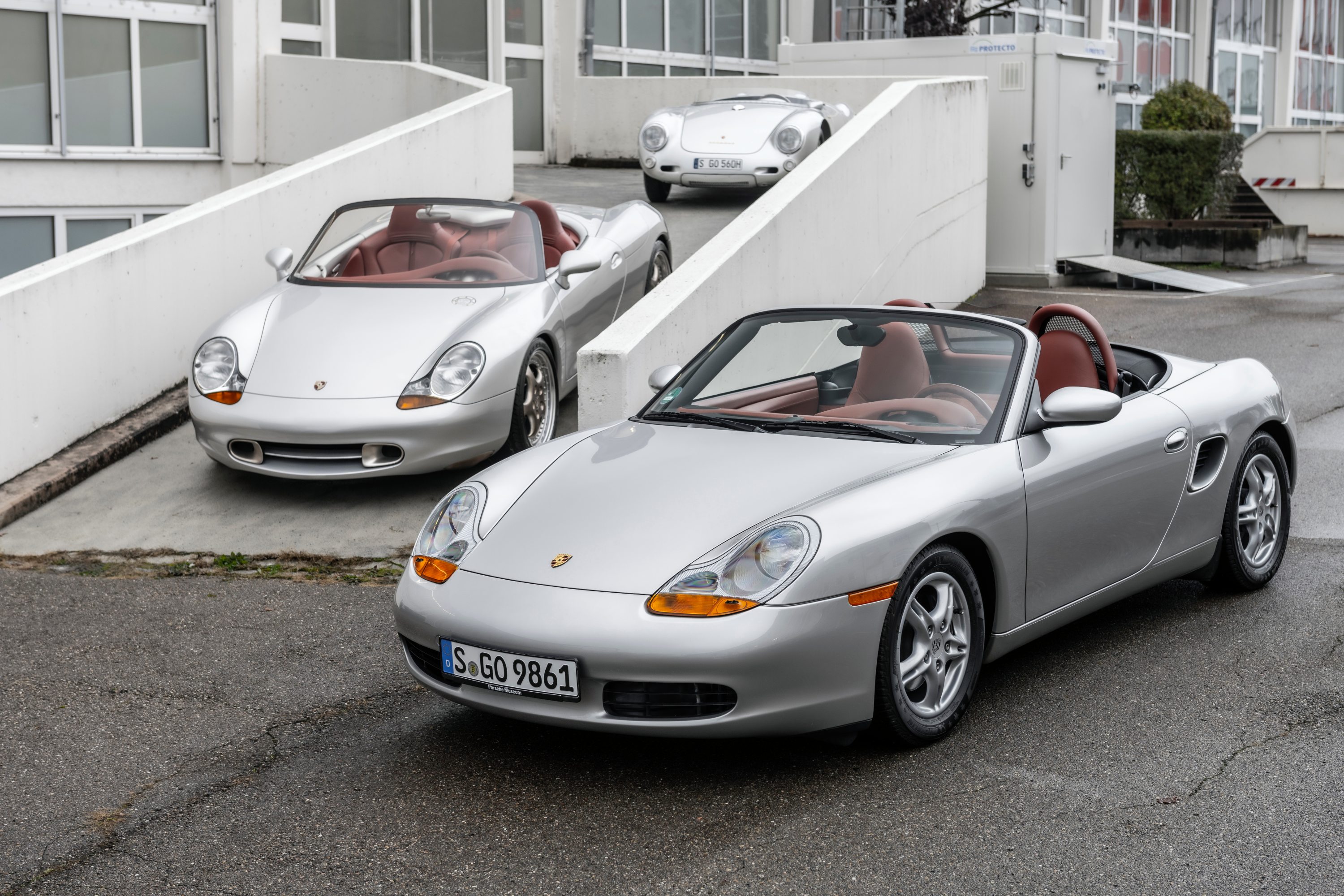
The first generation Porsche Boxster in front of the Boxster Concept and the 550 Spyder from 1953
When the production car finally arrived, in spring 1996, it was an immediate success, opening up a new audience to the company at a time of declining sales and perilous finances. While the Boxster, and its sibling car, the closed-top Cayman that launched in 2005, were briefly best sellers, their key importance was in reiterating Porsche’s commitment to the sports car. It was the arrival of the Cayenne SUV that really reversed the company’s fortunes.
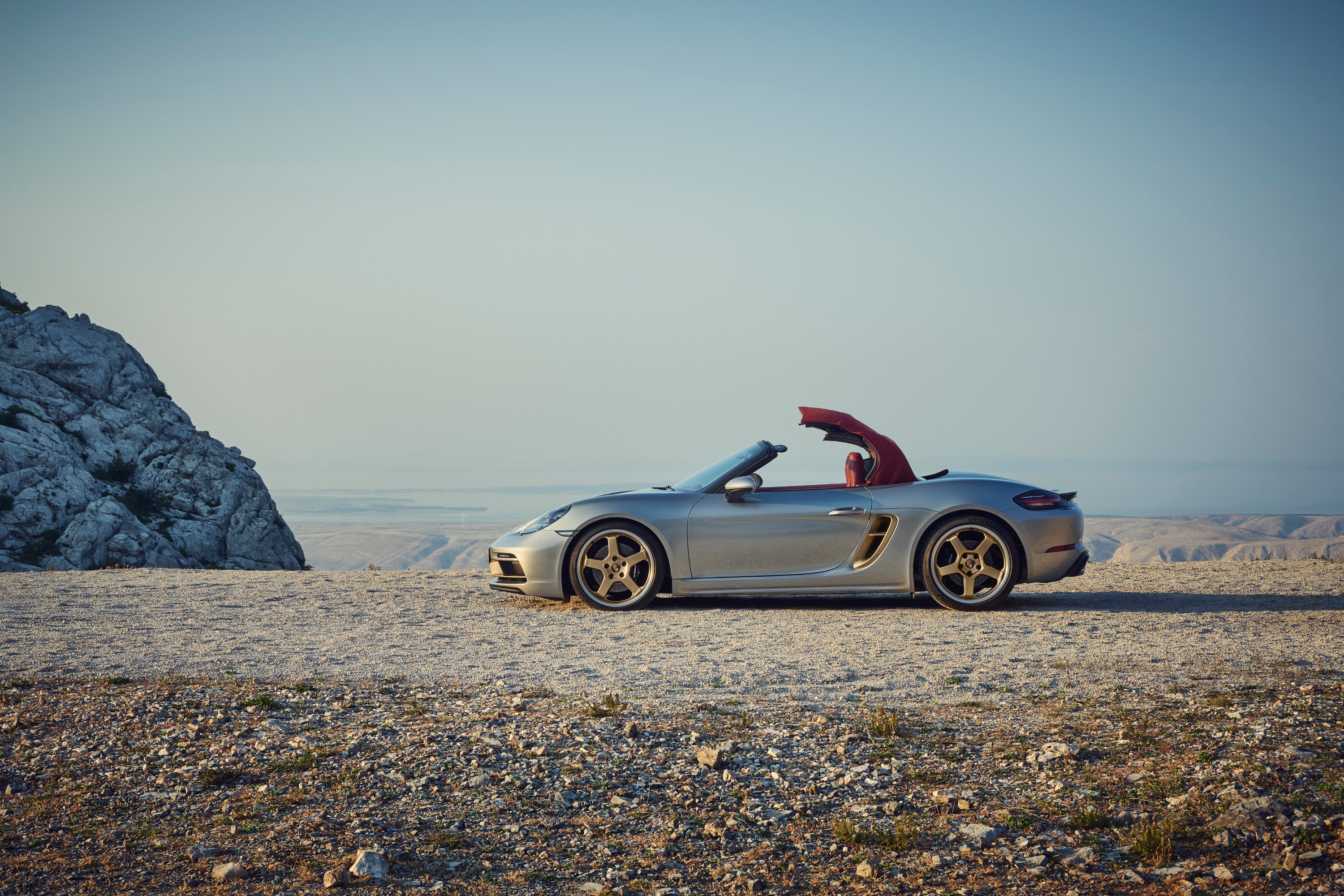
Inside the Porsche 718 Boxster
But that’s another story. The Porsche Boxster is now in its fourth generation, with around 400,000 sold to date. We’re happy to report that this latest iteration is just as delightful as the original. Few cars feel as well-balanced and so dynamically sorted as this little convertible. As tested in GTS 4.0 trim, with more sporting accoutrements and upgrades, it shares its spirited verve with plenty of power and practicality. It’s a strict two-seater, with a well-insulated hood that fits snugly over the immaculately laid-out cabin. Everything falls easily to hand, and the excellent visibility and perfect driving position make this a car you can easily use every day.
Wallpaper* Newsletter
Receive our daily digest of inspiration, escapism and design stories from around the world direct to your inbox.
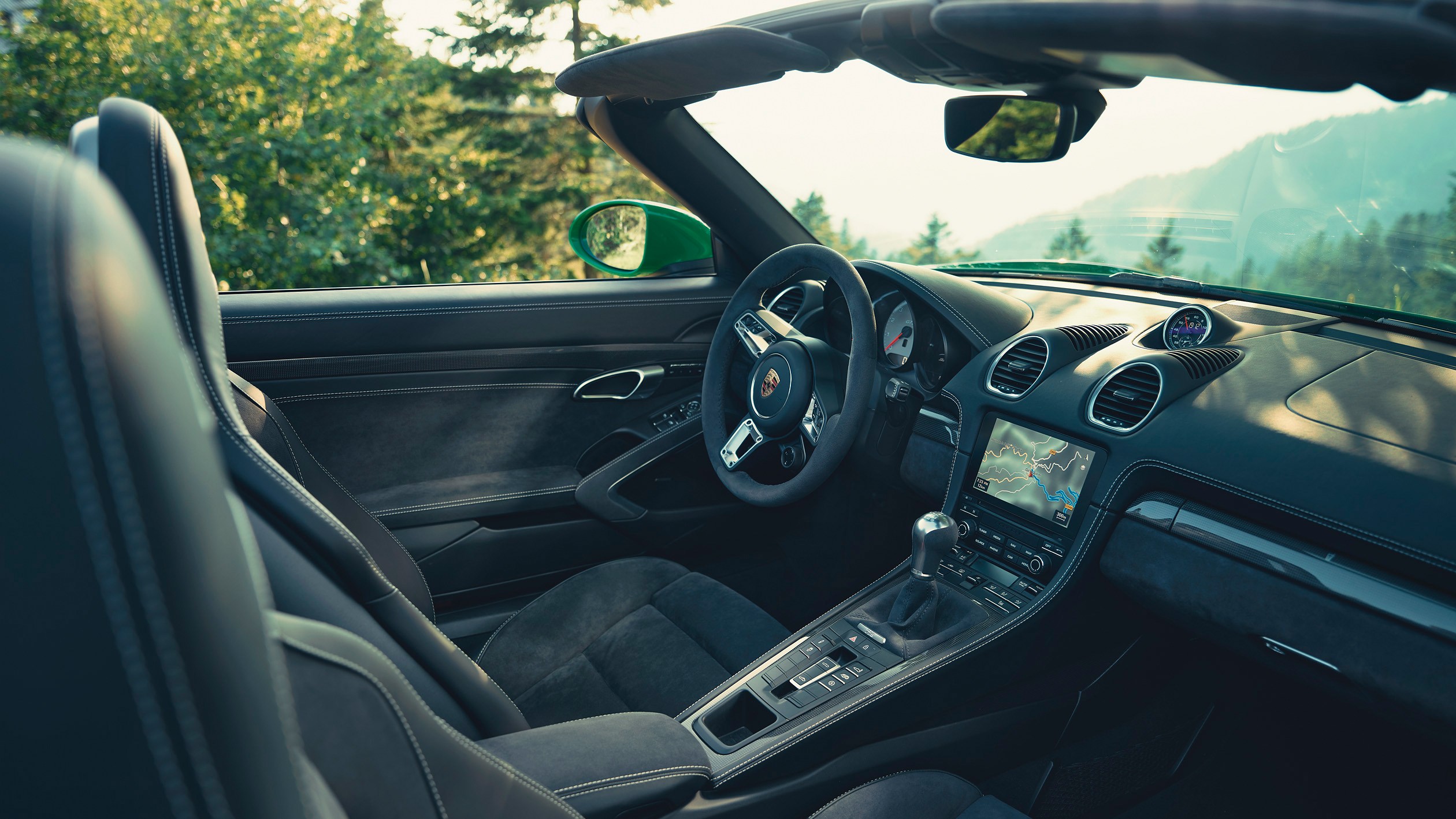
Porsche 718 Boxster GTS 4.0
Porsche’s faith in sports cars will be tested in the coming years. Up until now, the company’s electrification strategy has been focused on larger cars like the Taycan and the forthcoming Macan EV, as well as hybrid versions of the Panamera and Cayenne. Hybridising or even electrifying the tightly packaged 911 was seemingly not an option.
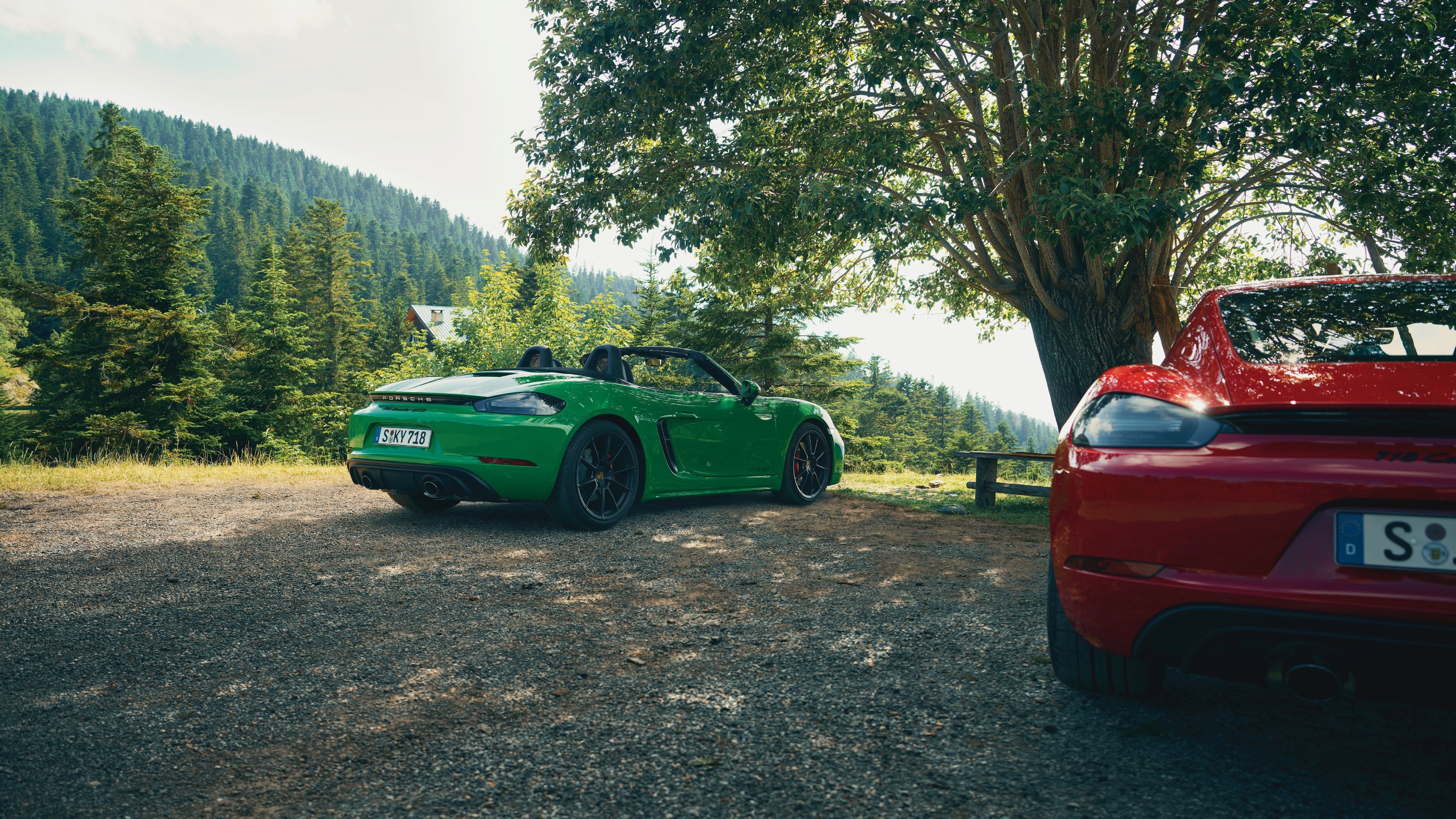
Porsche 718 Boxster GTS 4.0 alongside the Porsche 718 Cayman (right)
Porsche Boxster and an electric future
Current intelligence suggests that a 911 hybrid will ultimately see the light of day, the culmination of a development project that has taken well over a decade. At around the same time, the 718 series will be re-born as pure electric sports cars, a market sector that is currently sorely lacking. How do we feel about that? For purists, the idea will take quite some getting used to.
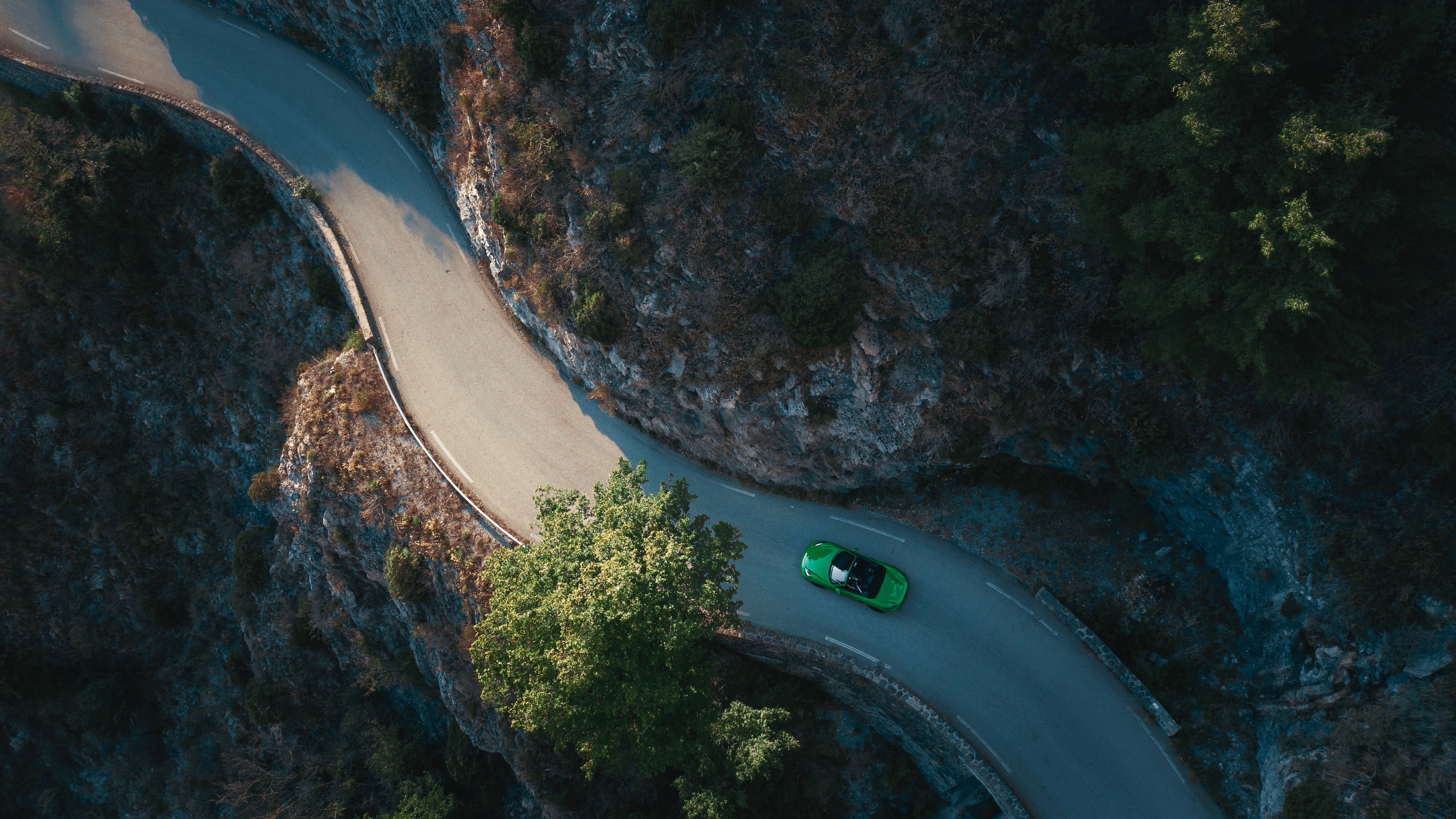
Porsche 718 Boxster GTS 4.0
For Porsche, it’s a commercial necessity: companies that cater to raw desire rather than day-to-day need have a vested interest in maintaining the mobility status quo. For that reason alone, Porsche can’t allow the electric Boxster to disappoint. In the 718, it has set itself exceptionally high standards to exceed.
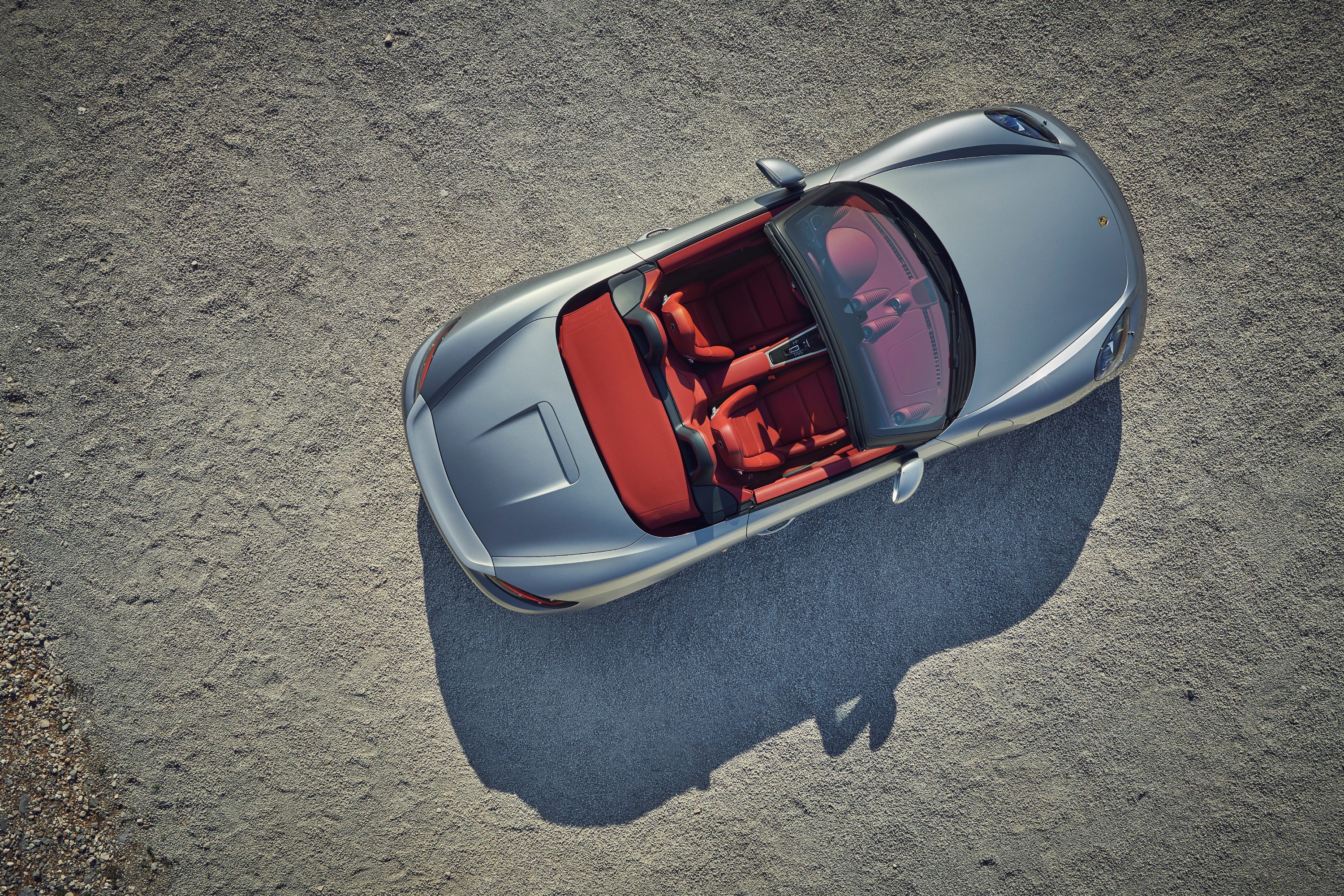
Porsche 718 Boxster GTS 4.0, from £66,340
Jonathan Bell has written for Wallpaper* magazine since 1999, covering everything from architecture and transport design to books, tech and graphic design. He is now the magazine’s Transport and Technology Editor. Jonathan has written and edited 15 books, including Concept Car Design, 21st Century House, and The New Modern House. He is also the host of Wallpaper’s first podcast.
-
 Put these emerging artists on your radar
Put these emerging artists on your radarThis crop of six new talents is poised to shake up the art world. Get to know them now
By Tianna Williams
-
 Dining at Pyrá feels like a Mediterranean kiss on both cheeks
Dining at Pyrá feels like a Mediterranean kiss on both cheeksDesigned by House of Dré, this Lonsdale Road addition dishes up an enticing fusion of Greek and Spanish cooking
By Sofia de la Cruz
-
 Creased, crumpled: S/S 2025 menswear is about clothes that have ‘lived a life’
Creased, crumpled: S/S 2025 menswear is about clothes that have ‘lived a life’The S/S 2025 menswear collections see designers embrace the creased and the crumpled, conjuring a mood of laidback languor that ran through the season – captured here by photographer Steve Harnacke and stylist Nicola Neri for Wallpaper*
By Jack Moss
-
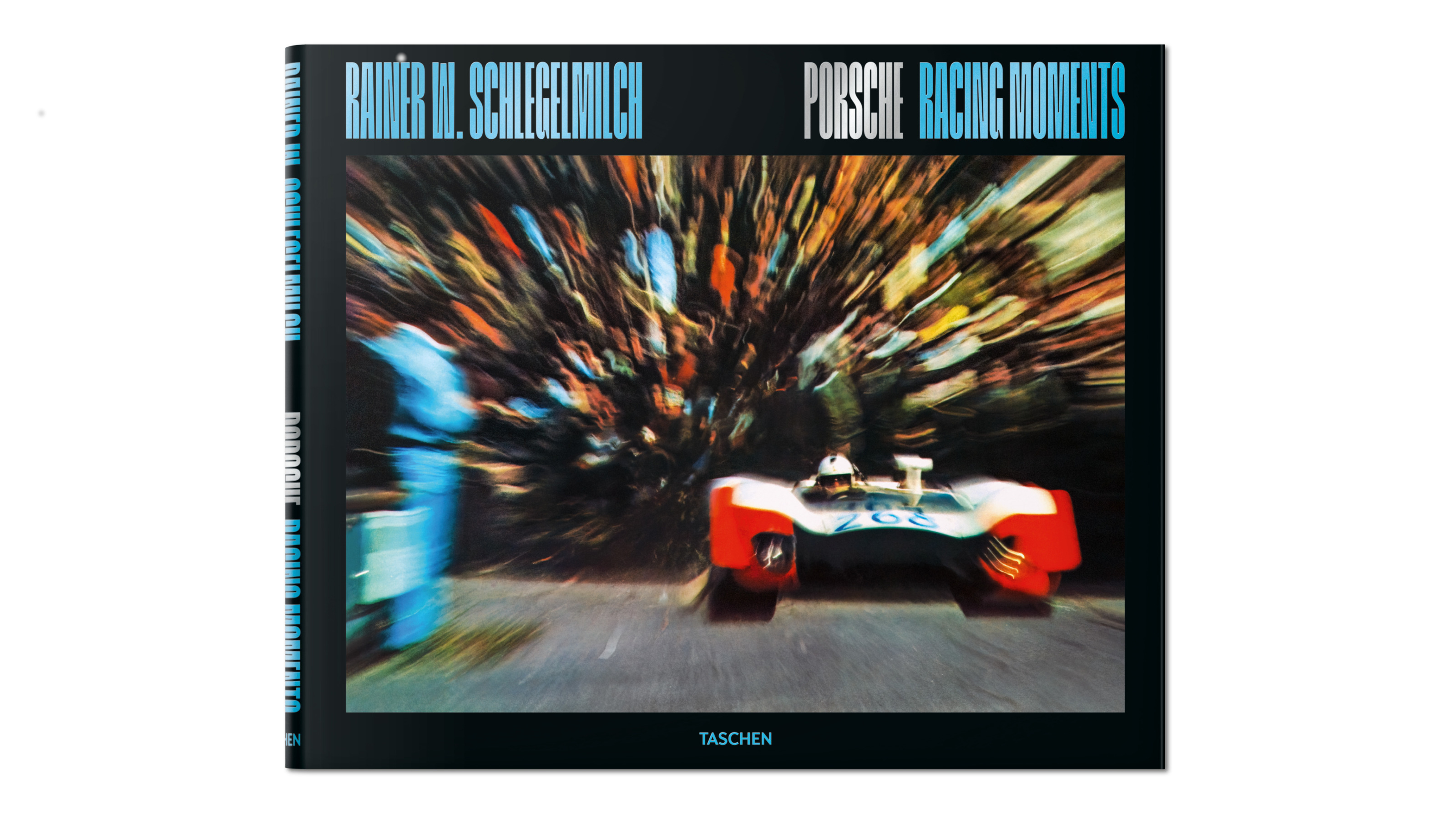 Rainer W. Schlegelmilch's Porsche photography showcases the aesthetics of speed
Rainer W. Schlegelmilch's Porsche photography showcases the aesthetics of speedTaschen's new edition of Rainer W. Schlegelmilch’s collected imagery from a quarter of a century spent following Porsche racing highlights historical machines, emotive camera technique and major moments on the track
By Jonathan Bell
-
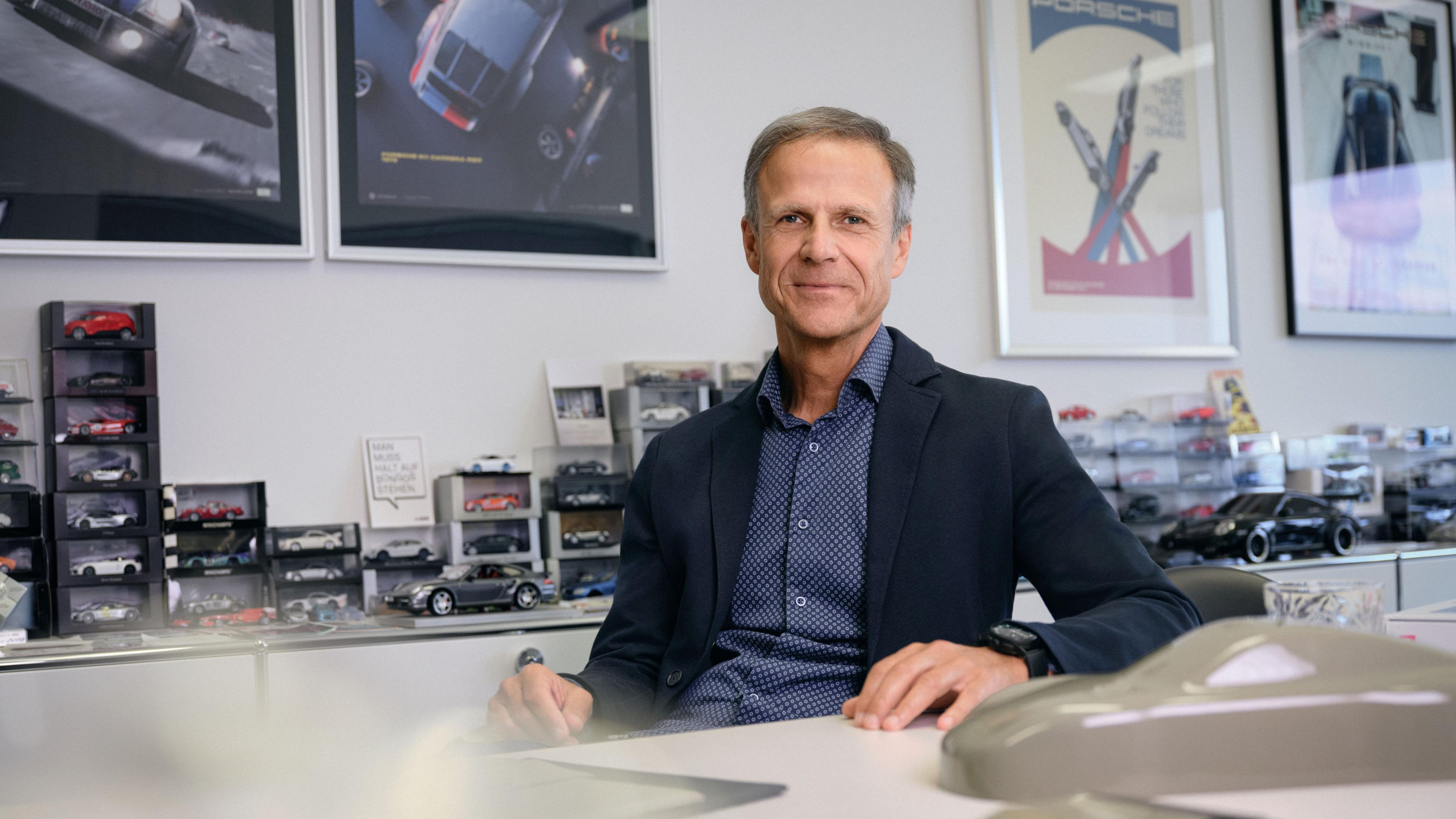 Michael Mauer on two decades at the helm of Porsche’s design
Michael Mauer on two decades at the helm of Porsche’s designPorsche’s signature style has diversified in recent years, thanks to the design leadership of Michael Mauer. We caught up with him to reflect on his 20 years in the hot seat
By Rory FH Smith
-
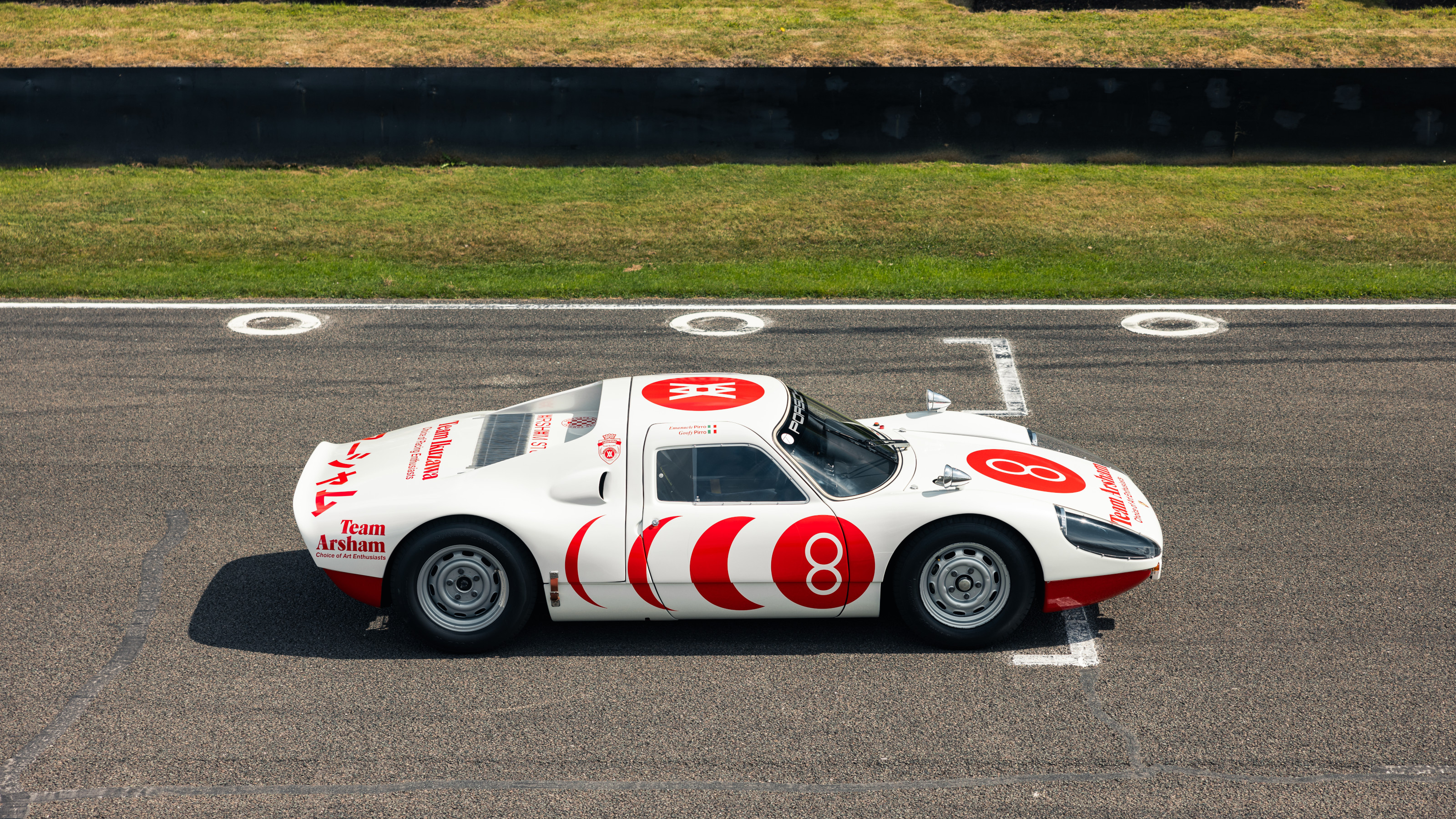 Team Ikuzawa brings the art of Daniel Arsham to motorsport
Team Ikuzawa brings the art of Daniel Arsham to motorsportCreative director Mai Ikuzawa has overseen a new capsule clothing collection, a collaboration with artist Daniel Arsham that also honours her racing driver father Tetsu Ikuzawa
By Josh Sims
-
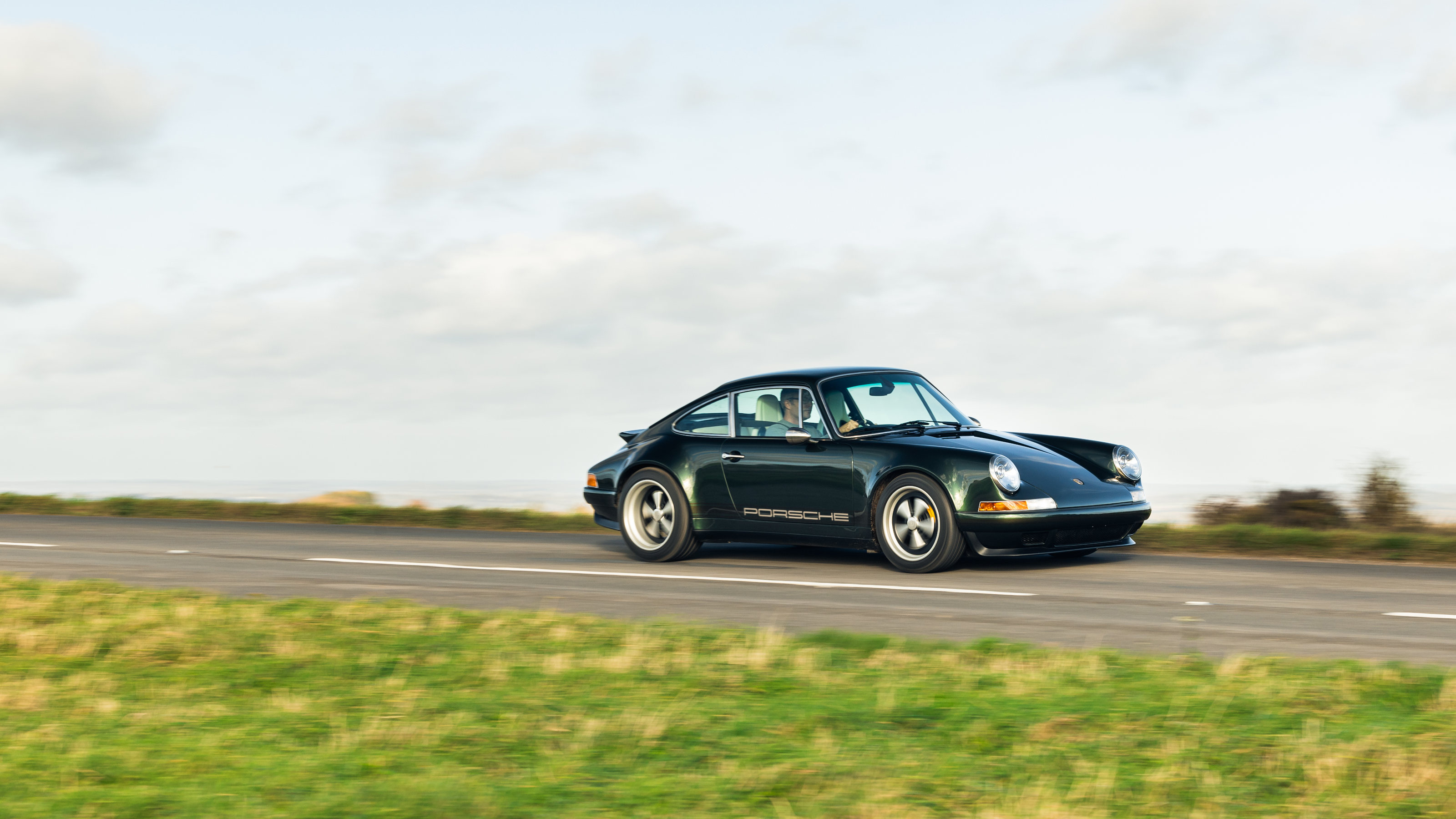 We sample the latest sports car from bespoke British manufacturer Theon Design
We sample the latest sports car from bespoke British manufacturer Theon DesignWith the GBR002, Theon Design have transformed a classic Porsche into a low-key bespoke supercar, uprating and enhancing the iconic 964 model to exacting customer specifications
By Jonathan Bell
-
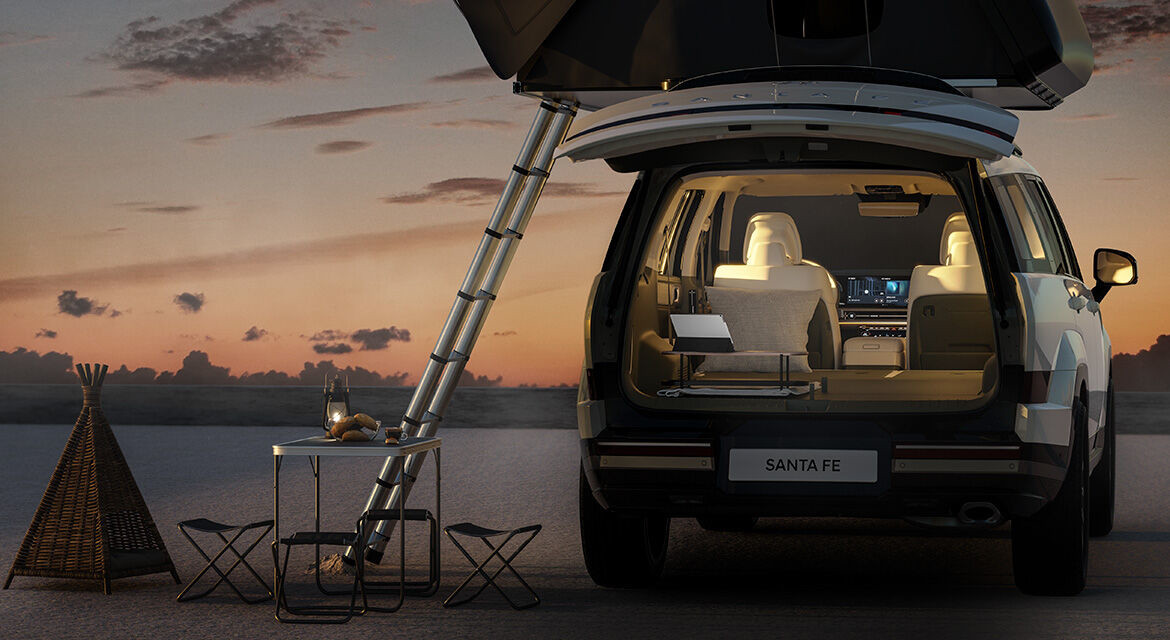 New-generation car camping and roof tents for luxury-loving adventurers
New-generation car camping and roof tents for luxury-loving adventurersCar camping is having a moment. While Hyundai and Porsche can get you kitted up, we explore other options
By Jonathan Bell
-
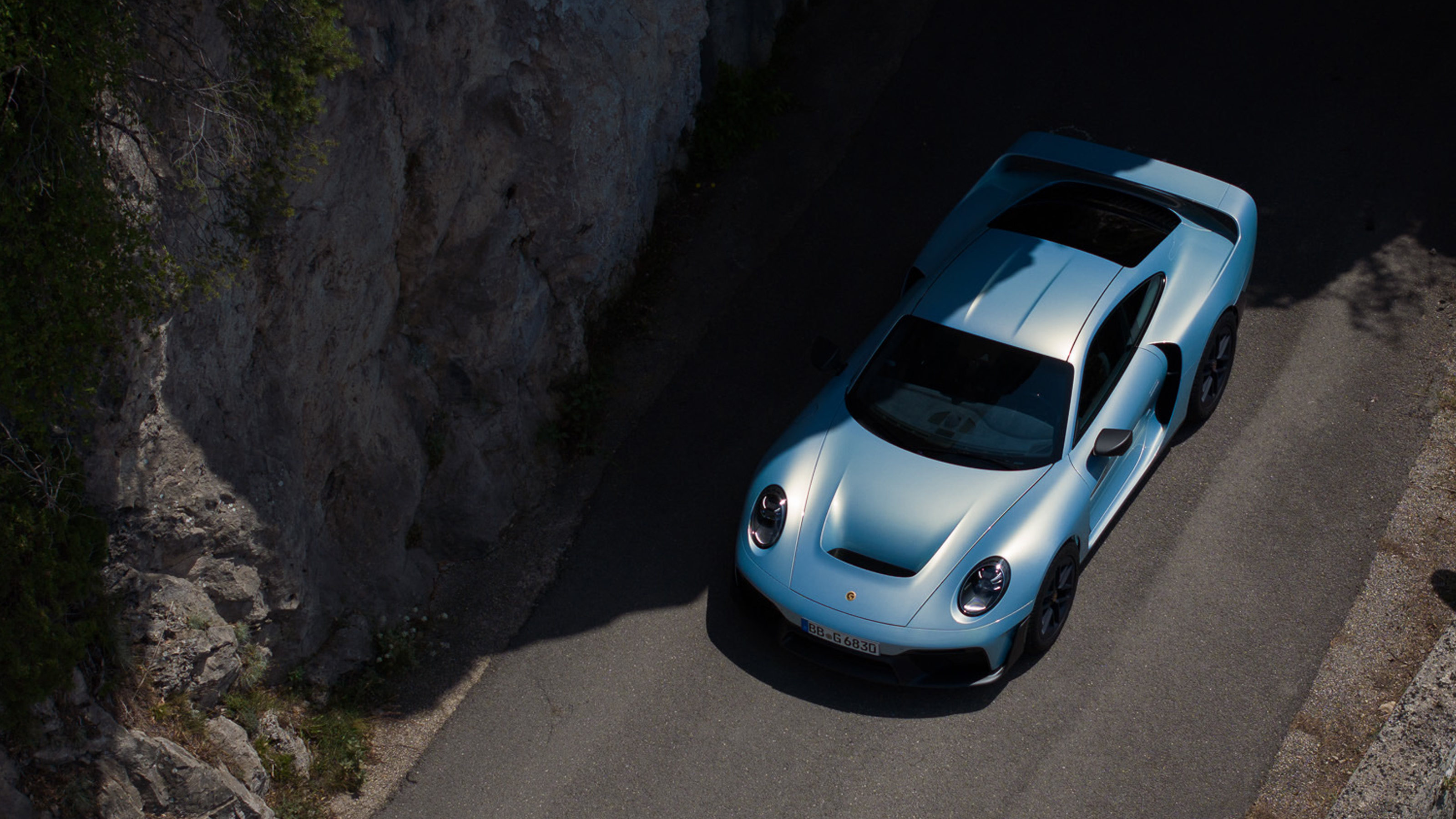 The Marsien is an all-terrain supercar that takes the Porsche aesthetic into new territories
The Marsien is an all-terrain supercar that takes the Porsche aesthetic into new territoriesThe Marsien by Marc Philipp Gemballa is a limited edition off-roading supercar inspired by the golden era of rallying Porsches
By Jonathan Bell
-
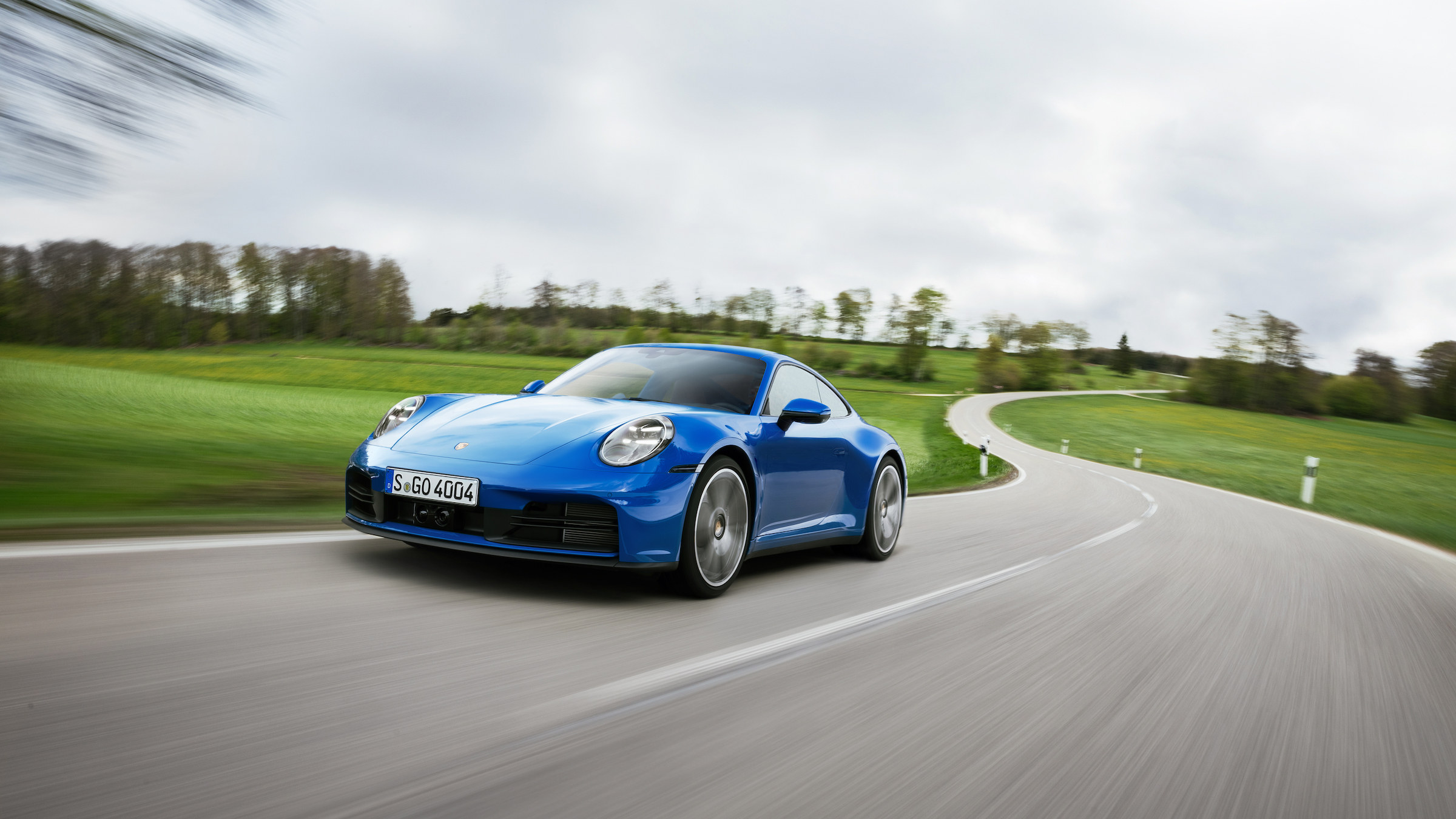 Driven: the electrically enhanced Porsche 911 raises the bar for the sports car stalwart
Driven: the electrically enhanced Porsche 911 raises the bar for the sports car stalwartThe new Porsche 911 Carrera GTS marks the debut of Porsche’s T-Hybrid system, boosting performance and efficiency. We get behind the wheel
By Rory FH Smith
-
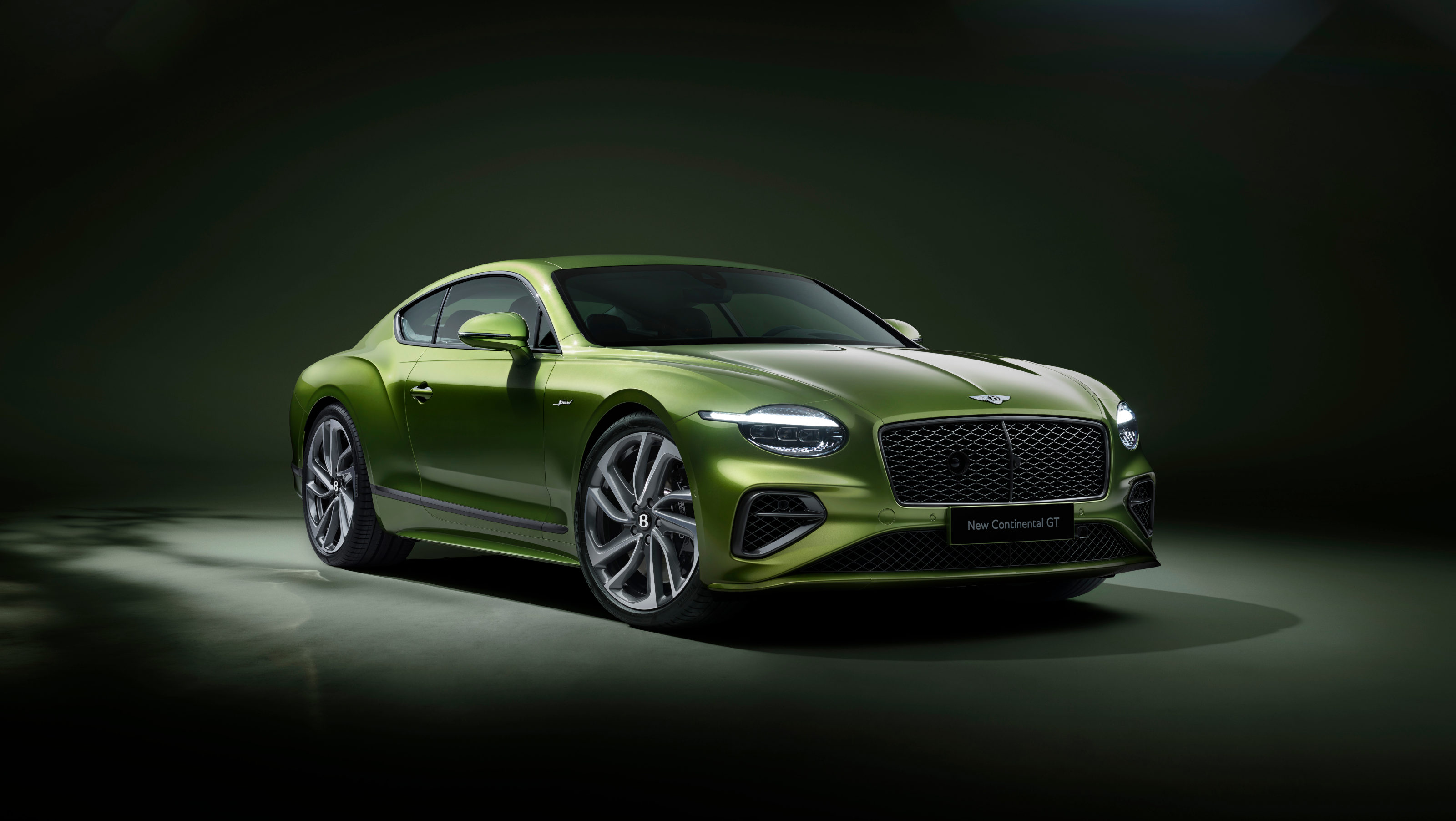 Bentley rolls out the latest version of its majestic grand tourer, the Continental GT Speed
Bentley rolls out the latest version of its majestic grand tourer, the Continental GT SpeedAvailable as both coupé and convertible, the fourth generation Bentley Continental GT Speed harnesses hybrid power to become a record breaker for the brand
By Jonathan Bell